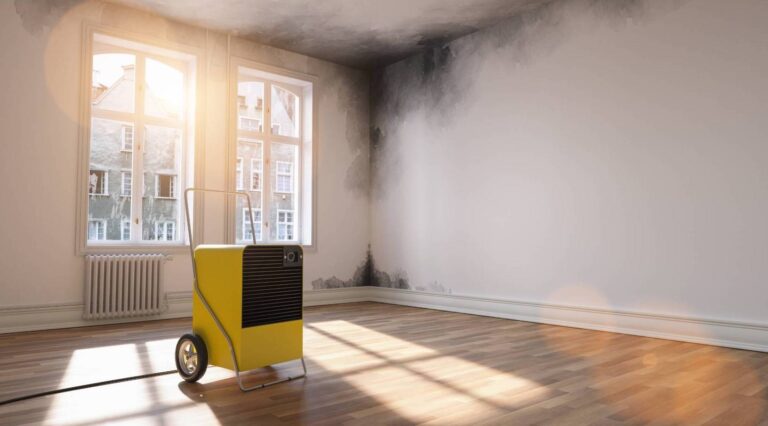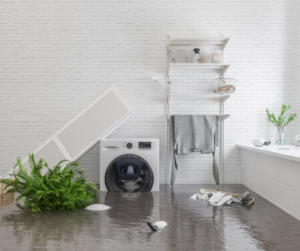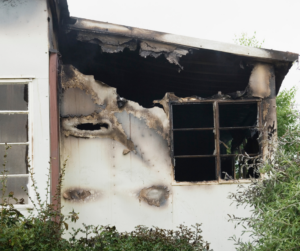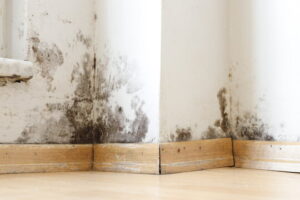If you discover a large infestation of mold in your home, you might wonder if your homeowners insurance will cover its removal. A large amount of mold can be a serious health hazard, and it is best to hire professionals to get rid of it — and that can be expensive.
Unfortunately, mold removal is not usually covered by homeowners insurance, but it might be in some instances. It depends on the cause of the mold as well as your type of homeowners insurance. Let’s unpack this.
What is Homeowners Insurance?
In a broad sense, homeowners insurance provides financial protection in case your home is damaged in a sudden or accidental event. In reality, there are many types of homeowners insurance, each covering (or not covering) their own range of hazards.
The two main structures for homeowners insurance are: those that list the disasters that are covered, and those that list the exclusions. These are called “named perils “and “open perils,” respectively.
Named Peril Policies: All disasters that are covered by your policy are specifically named. Any hazard that is not listed is not covered. Mold typically isn’t listed as a hazard that is covered. However, mold could be covered if it is caused by a named peril such a burst water pipe. In that case, the mold would be considered to be “resulting damage” from the peril that is covered. Since mold isn’t the main event, but rather a consequence of the initial damage, the amount the insurance company will pay for its removal is typically limited.
Open Peril Policies: Disasters that are not covered by your policy are listed as exclusions. Anything that is not listed as an exclusion is covered. Mold is often listed as an exclusion. However, just as in the Named Peril Policy, mold removal could be partially covered if it is the result of an event that is covered.
Why Isn’t Mold Typically Directly Covered?
Mold used to be covered by homeowner insurance policies, but insurance companies were paying out too many large claims and they began limiting coverage starting around 2000.
Homeowners insurance is meant to provide financial relief in the event of sudden or accidental disasters. But mold grows over time, and with good home maintenance and humidity control, its growth can be halted.
How Mold May, or May Not, Be Covered By Your Homeowners Insurance
To summarize, while each claim is assessed on its own merits by the insurance company, they do come across the same three types of situations often. The coverage for these types of situations is fairly standard.
1. Mold Caused by Covered Perils
Mold is often the consequence of water leakage within your home. If your mold is caused by any of your water-related perils, then you should be able to make a claim for “resulting damage,” especially if the mold was hidden — for example, within a wall. Examples of what might constitute an initial peril could be:
- A water heater rupture
- Leaks from malfunctioning appliances
- Water damage from fire fighting
- Plumbing leaks
2. Mold Caused by Acts of Nature
If water damage that leads to mold is caused by forces coming from outside your home, you might be able to make a claim depending on the initial event and if your insurance covers it. For example, if a storm damages your roof and allows water to enter, and that results in the growth of mold, you will probably be partially covered for mold removal along with a claim for the other damage.
However, if the initial event is flooding from a storm, you are probably out of luck. Flooding is rarely a covered event in a standard homeowners insurance. Unless you have a separate flood insurance policy, if mold grows as a result of flooding, you won’t be able to make a claim.
3. Mold Caused by Negligence
As mentioned above, since this type of mold is not the result of a sudden event, and could be avoided with proper home maintenance, (controlling humidity, preventing or fixing water leaks, broken seals and sump pumps, for example) insurance companies will not cover this type of mold removal.
How to Improve the Odds of Having Your Mold Claim Accepted
There are a number of steps to take to make sure the mold doesn’t spread any further and your insurance claim is seen in the best light.
- Mold can grow quickly and it is important to report the incident as soon as you can.
- Document the damage with photos and video.
- Do what you can to stop the source of the leak and clean up any excess water. For example: shut off the water main, clean pooled water, and run a dehumidifier. Remove, but keep any waterlogged material for the adjuster to see. If you need to buy cleaning supplies, keep your receipts.
- Follow the instructions of your insurance company to process the claim.
- Hire an approved mold removal company.
If your claim is denied, you could get a second opinion, file an appeal with your insurance company and/or hire a lawyer.
We strongly advise that you hire a reputable mold removal company , if you need to remove the mold yourself. If not done properly, mold can spread throughout your home and cause serious health issues.







Give us a follow!